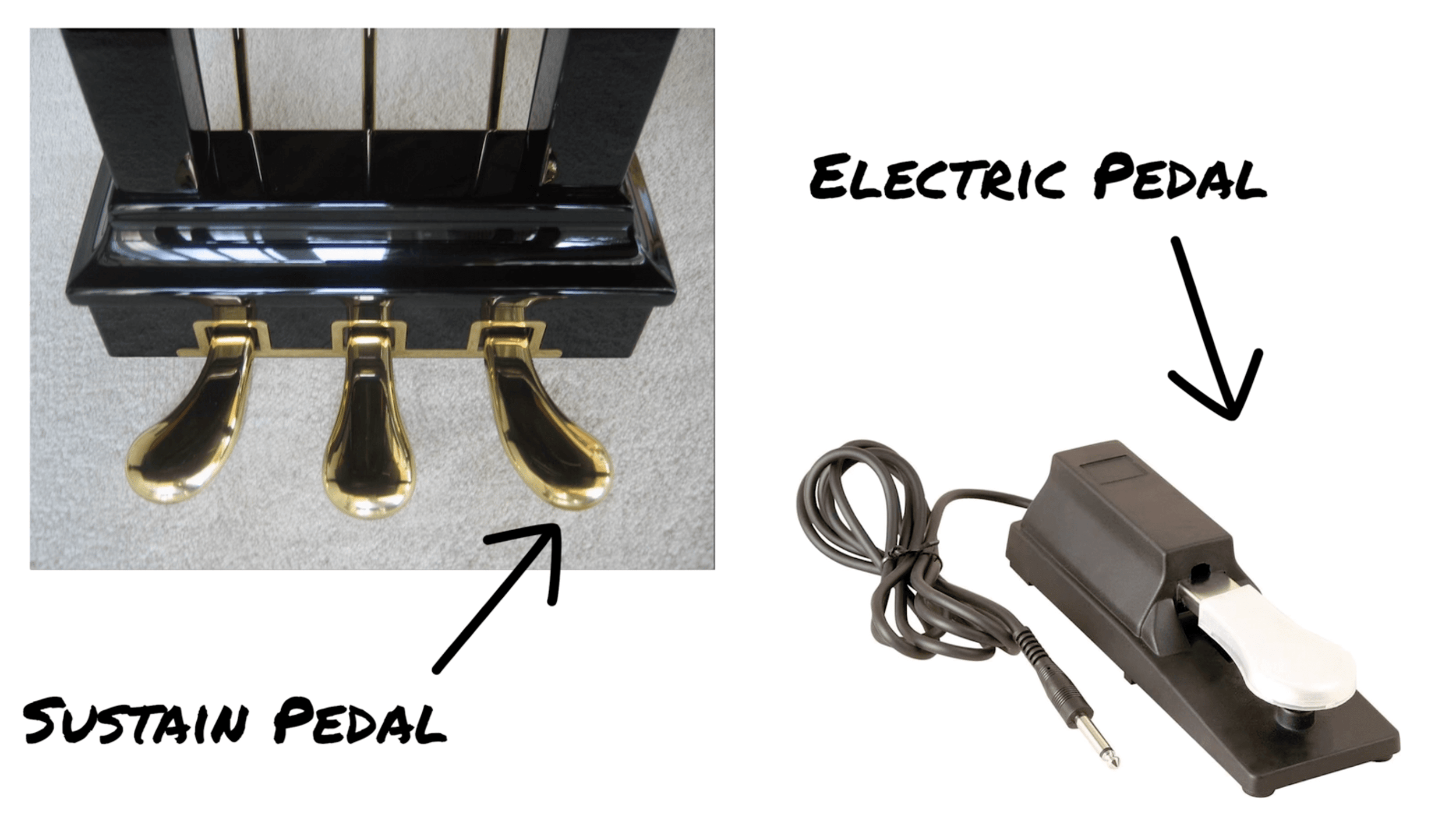There is ONE thing you can do right now that will INSTANTLY make you sound better at the piano.
Nothing else will make as big a difference for so little effort.
Are you ready?
Drumroll, please!
It’s amazing how much of a difference the pedal can make to your playing.
Just by using the pedal, you can go from sounding amateur to professional. Form clunky and disjointed to smooth and beautiful.
It’s kind of the best-kept secret of piano playing.
And, once you start playing with the pedal, you’ll never go back (trust me).
In this lesson, I use a simple version of Für Elise to demonstrate the difference the pedal makes.
What do I mean by the “pedal”? When I say the pedal I’m talking about the sustain pedal (or damper pedal as it’s also known).
Generally, whenever anyone says the word “pedal” in relation to the piano, that’s what they’re talking about.
The sustain pedal does exactly what you think — it sustains the notes. So that even when you stop playing a note with your finger, the sound will continue to ring out.
This allows you to connect notes and chords together seamlessly.
Here’s what the pedals look like on most pianos. Acoustic pianos generally have 3 pedals. The sustain pedal is on the right.

Keyboards usually have only one pedal, that has to be plugged into the back of the keyboard.
Many beginners find it difficult to use the pedal, simply because there’s so much else going on that it can be hard to add another level of complexity.
The pedal can make you sound so much better. But if you don’t use it correctly, you’ll end up sounding worse!
Because if you just press and hold the pedal, all the notes you play will just blend and mush together into a big, musical mess!
You have to release the pedal every now and then to keep it sounding beautiful.
In our lessons, you’ll notice a digital keyboard above the piano. In the top left of that, there is a little circle with the word, “Sustain”.
Every time I press the sustain pedal down that circle goes green. When I lift my foot off the pedal it goes white again. Like this:
So when you watch a lesson, keep an eye on how I’m using the pedal while I play.
A great tip that will work in every situation is to lift your foot off the pedal every time you change a chord.
Play the new chord, and then quickly release and press back down on the pedal. It will “clear” the old notes and sustain the lovely new notes to keep the tune sounding beautiful without getting muddled.
Like all things, learning to use the pedal takes a bit of practice, but once you get it, there’s no going back.
We have some more exercises to help you work on your pedaling skills.
Try it for yourself. It really is the fastest way to sound better at the piano.
Have fun, and happy pedaling!
*This article contains affiliate links, which means we might earn a small commission from the product seller if you make a purchase. For more info, check out our privacy page.
Lisa Witt has been teaching piano for more than 20 years and in that time has helped hundreds of students learn to play the songs they love. Lisa received classical piano training through the Royal Conservatory of Music, but she has since embraced popular music and playing by ear in order to accompany herself and others. Learn more about Lisa.
/marketing/pianote/promos/april/banner-bg-m.webp)
We use cookies for traffic data and advertising. Cookie Policy »
/marketing/pianote/promos/april/banner-title.webp)